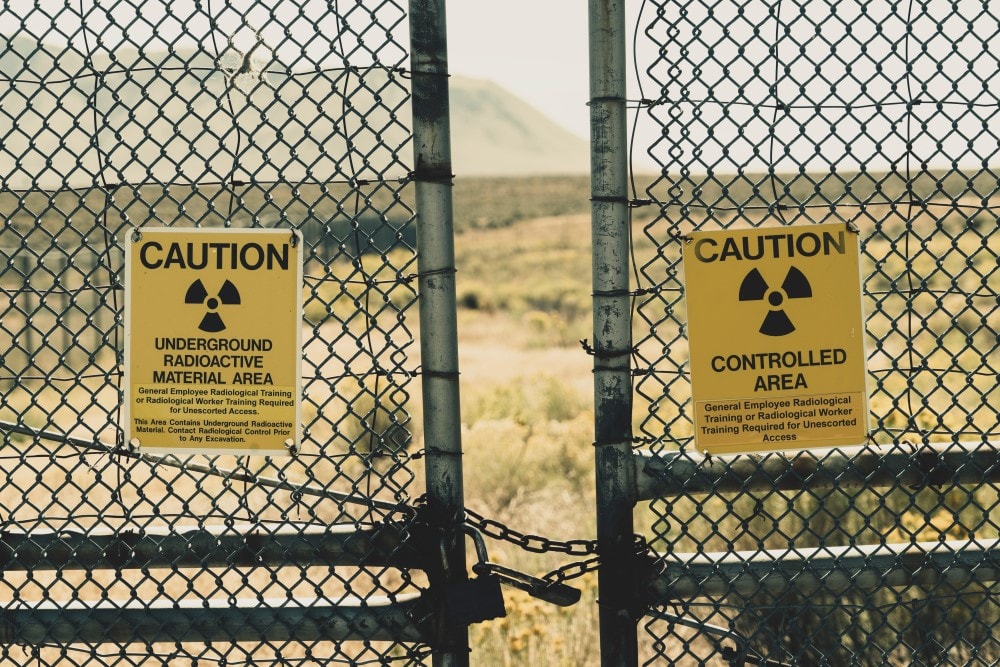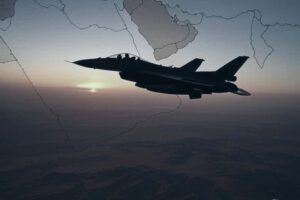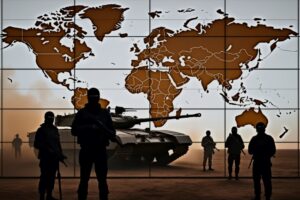
Iran’s nuclear program has been a source of global concern for decades. However, in recent months mounting evidence is elevating fears of Iranian nuclear weapons development and a possible breakout within months.
In parallel, the geopolitical landscape is currently tilting in Iran’s favor. Israel is preoccupied with a prolonged conflict on multiple fronts, the United States is in the midst of a volatile election season, and Tehran’s relations with both Russia and China are expanding.
Given these developments, the Iranians may reassess their policy and conclude that the time is ripe for building a nuclear bomb. Against this backdrop, a combination of factors increasingly points to Iran’s intentions to weaponize its nuclear project. This report views five areas of particular concern:
1. Uranium Enrichment
Iran has significantly increased both its uranium enrichment levels and stockpiles beyond the limits set in the 2015 nuclear deal, the JCPOA. By now, Tehran accumulated a growing stockpile of uranium enriched to 60%.
This level of enrichment is technically challenging to achieve and is considered a short step away from weapons-grade uranium (90%). Previously, an Israeli official warned that enrichment to 90% would trigger an IDF strike on Iran’s nuclear sites.
Alarmingly, the total stockpile of enriched uranium has grown to several times the limit set by the JCPOA. This rapid accumulation drastically reduces the breakout time needed to produce enough fissile material for a nuclear weapon, should Iran decide to pursue that path.
2. Advanced Centrifuges
Iran has installed and operated several generations of advanced centrifuges, including the IR-2m, IR-4, and IR-6 models. These centrifuges are significantly more efficient than the older IR-1 models permitted under the JCPOA.
Iran has also been developing even more advanced models, such as the IR-8 and IR-9. The use of these advanced centrifuges allows for faster and more efficient uranium enrichment, potentially reducing the time needed to produce weapons-grade material.
According to recent reports, new centrifuges installed at the Fordow facility would enable Iran to triple the quantity of enriched uranium at the site. This would enable Tehran to produce enough material for several bombs every month.
Additionally, Iran has been conducting research and development on centrifuge technology at facilities like Natanz and Fordow, further enhancing its enrichment capabilities.
3. Lack of Transparency
The IAEA has reported increasing difficulties in monitoring Iran’s nuclear facilities. Israel’s INSS think tank has warned of a “significant decline” in the IAEA’s ability to keep track of Tehran’s nuclear activities. Specific concerns include the following:
-Restricted access to certain sites, including some suspected of hosting undeclared nuclear activities.
-The disabling or removal of IAEA monitoring equipment, including surveillance cameras and online enrichment monitors.
-Limitations on inspector access, particularly to centrifuge production facilities.
-Delays or incomplete responses to IAEA queries about past activities and current operations.
These issues have created significant gaps in the IAEA’s knowledge of Iran’s nuclear activities, making it harder to accurately assess the nature of the program in real time.
4. Ballistic Missile Program
Iran continues to develop and test various ballistic missile systems, which could potentially be used to deliver nuclear warheads. Key concerns include the following:
-The development of medium-range ballistic missiles with ranges exceeding 2,000 km, capable of reaching targets throughout the Middle East and parts of Europe.
-Advancements in solid-fuel technology, which allows for faster launch times and improved mobility.
-Improvements in accuracy and payload capacity of missile systems.
-Continued work on space launch vehicles, which share many technologies with ICBMs.
While Iran maintains these missiles are for conventional deterrence, their capability to potentially deliver nuclear warheads poses a significant concern.
5. Clandestine Activities
There are ongoing suspicions about undeclared nuclear sites and potential military dimensions of Iran’s nuclear program. Specific concerns include:
-The discovery of undeclared sites with traces of nuclear material, such as the warehouse in Turquzabad revealed in 2018.
-Continued questions about past nuclear weapons-related research, particularly the alleged “Amad Plan” from the early 2000s.
-Suspicions of ongoing research into nuclear weapons design, including computer modeling of nuclear explosions and the development of neutron initiators.
-Reports of covert procurement networks for dual-use technologies and materials.
These suspicions, combined with Iran’s history of undeclared nuclear activities, contribute to global skepticism about the nature of Iran’s nuclear program.
Currently, Israel’s heightened concerns about Iran’s nuclear program center on the potential for rapid Iranian weaponization, the challenges of targeting fortified nuclear facilities in Iran, and US hesitation to take a harder line with Tehran.
Notably, Israel is monitoring Iran’s nuclear program by deploying a range of tools and capabilities. Both the IDF and Mossad are involved in this project.


